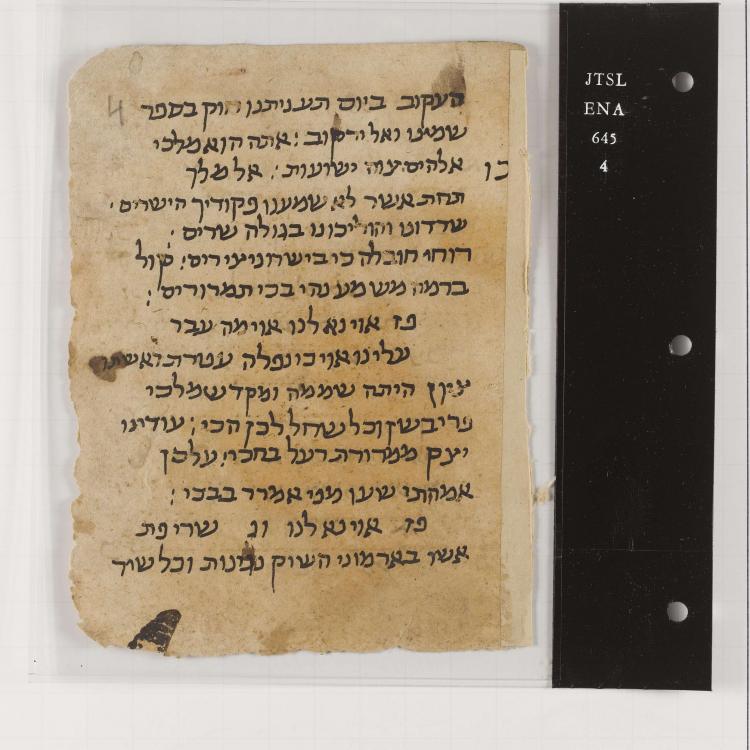Scribes of the Cairo Geniza
The Cairo Geniza contains over 300,000 fragments of paper and parchment. Up until the late 19th century, these fragments were housed in the attic of the Ben Ezra Synagogue, located in old Cairo. A Geniza is a temporary storage chamber for worn documents and books that contain Hebrew characters, considered sacred in Jewish tradition. Due to the sacred nature of religious texts with Hebrew characters, they cannot be haphazardly thrown away; rather, they are placed in a temporary storage space, a Geniza, and then they are buried in a cemetery. However, for unknown reasons the Jews of Cairo never buried the majority of their worn manuscripts. Their uncustomary practices are also found in the content of the manuscripts themselves. They are both of a religious genre and an everyday nature; Prayer books and marriage contracts are intermingled with court petitions and shopping lists. Dating mostly from the 10th-13th centuries CE, the documents from the Cairo Geniza are widely recognized as the most important documentary source for reconstructing the social, economic, political, literary, and religious lives of Jews and the other inhabitants of the premodern Mediterranean basin.
In this project we are asking volunteers to transcribe fragments from The Cairo Geniza. In a first phase of this project, these fragments are sorted for the purpose of easing the process of transcription. Transcription of these fragments is vitally important for research and more broadly, because they have the potential to rewrite the history of the premodern Middle East, Mediterranean and Indian Ocean trade, and the Jewish diaspora. Virtually all scholars who have studied these texts have come away with a transformed sense of the history of the region and the long ties of intimacy among its people.
